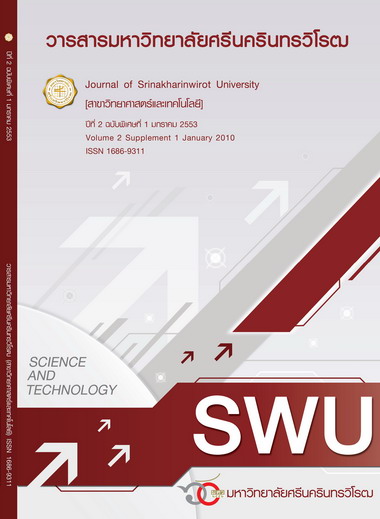ปัจจัยที่มีผลต่อการเข้าถึงการผ่าตัดผ่านกล้องในประเทศไทย: ผลการวิเคราะห์ข้อมูลผู้ป่วยในระดับประเทศ ปี พ.ศ. 2548-2550 (FACTORS ASSOCIATED WITH THE USE OF LAPAROSCOPIC SURGERY IN THAILAND: RESULTS FROM NATIONWIDE INPATIENT DATABASE 2005-2007)
Keywords:
Laparoscope, Civil Servant Medical Benefit Scheme (CSMBS), Universal Coverage (UC)Abstract
บทคัดย่อในประเทศไทยส่วนใหญ่ข้อมูลทางคลินิกของการผ่าตัดผ่านกล้องบ่งชี้มีความปลอดภัยเหมาะสม และมีผลลัพธ์ทางคลินิกในระยะสั้นดีกว่าเมื่อเปรียบเทียบกับการผ่าตัดวิธีเดิมคือการผ่าตัดแบบเปิดหน้าท้อง อย่างไรก็ตามยังไม่มีงานวิจัยใดที่ศึกษาถึงปัจจัยที่มีผลต่อการเข้าถึงการผ่าตัดผ่านกล้องในระดับประเทศ การศึกษานี้จึงมีวัตถุประสงค์เพื่อประเมินความเสมอภาคในการเข้าถึงบริการ การผ่าตัดผ่านกล้องในผู้ป่วยภายใต้สิทธิสวัสดิการข้าราชการเปรียบเทียบกับผู้ป่วยภายใต้สิทธิประกันสุขภาพถ้วนหน้า และเพื่อค้นหาปัจจัยที่มีผลต่อการเข้าถึงบริการผ่าตัดผ่านกล้องจากสำนักงานกลางสารสนเทศบริการสุขภาพ ตั้งแต่วันที่ 1 มกราคม พ.ศ. 2548 ถึง 31 ธันวาคม พ.ศ. 2550 โดยใช้การวิเคราะห์ทางสถิติเชิงพรรณาและความถดถอยพหุลอจิสติก ผลการศึกษาพบว่า จำนวนครั้งของการนอนโรงพยาบาลของผู้ป่วยที่ได้รับการผ่าตัดผ่านกล้องคิดเป็นร้อยละ 3.52 (24,175 ครั้ง) จากจำนวนของการนอนโรงพยาบาลของผู้ป่วยทั้งหมด 686,553 ครั้ง ผู้ป่วยมีสิทธิสวัสดิการข้าราชการ (ร้อยละ 7.8) สามารถเข้าถึงบริการการผ่าตัดผ่านกล้องมากกว่าผู้ป่วยสิทธิประกันสุขภาพถ้วนหน้า (ร้อยละ 2.68) การเข้าถึงบริการผ่าตัดผ่านกล้องมีความสัมพันธ์กับเพศ อายุ ชนิดของโรค ปีที่ทำการรักษา ชนิดของโรงพยาบาลและสิทธิการรักษาพยาบาล โดยเฉพาะผู้ป่วยสิทธิสวัสดิการข้าราชการเป็นปัจจัยที่มีความสัมพันธ์ต่อการเข้าถึงบริการผ่าตัดผ่านกล้องอย่างมีนัยสำคัญทางสถิติ ทั้งนี้อาจเนื่องจากระบบการเบิกจ่ายค่ารักษาพยาบาลของผู้ป่วยสิทธิสวัสดิการข้าราชการมีความแตกต่างจากผู้ป่วยสิทธิประกันสุขภาพถ้วนหน้า ทำให้การเข้าถึงการผ่าตัดผ่านกล้องผู้ป่วยสิทธิสวัสดิการข้าราชการมากมากกว่าผู้ป่วยสิทธิประกันสุขภาพถ้วนหน้า ดังนั้นจึงเร่งให้มีการพิจารณาความคุ้มค่าของการใช้จ่ายในการผ่าตัดผ่านกล้องเปรียบเทียบกับการผ่าตัดแบบเดิมในโรคที่มีความสำคัญในประเทศไทย
Abstract
In Thailand, several recent clinical studies have demonstrated that laparoscopic surgery (LS) is safe, feasible, and associated with many short-term benefit compared with open surgery. No study has reported the factors associated with use of LS in nationwide level yet. This study aimed to compare the utilization of LS among patients under Civil Servant Medical Benefit scheme (CSMBS) with those under Universal Coverage scheme (UC) and to determine the factors associated with the provision of LS in most common diseases. A hospital data of patients undergoing LS were obtained from the Central Office for Healthcare Information. The database contains686,553 admissions with principle diagnoses related to LS from January 2005 to December 2007. Descriptive analyses and binary logistic regression models were used to analyze the data. The total of 24,175 hospitalizations (3.52%) was operated with LS. The proportion of CSMBS patients undergoing LS (7.8%) was higher than that of UC patients (2.68%). The provision of LS was associated with age, sex, principle diagnosis, admission year, hospital characteristics and type of insurance. Patients’ health insurance scheme (i.e., CSMBS) was a significant factor associated with the use of LS. A different healthcare reimbursement system among CSMBS beneficiaries compared to UC may explain the higher LS uptake. There is an urgent need to determine the value for money of laparoscopic surgery to the traditional treatment in most common diseases in Thailand.
Downloads
Downloads
Published
How to Cite
Issue
Section
License
Srinakharinwirot University Journal of Sciences and Technology is licensed Under a Creative Commons Attribution-NonCommercial-NoDerivs 4.0 International (CC-BY-NC-ND 4.0) License, Unless Otherwise Stated. Please Read Journal Policies Page for More Information on Open Access, Copyright and Permissions.



